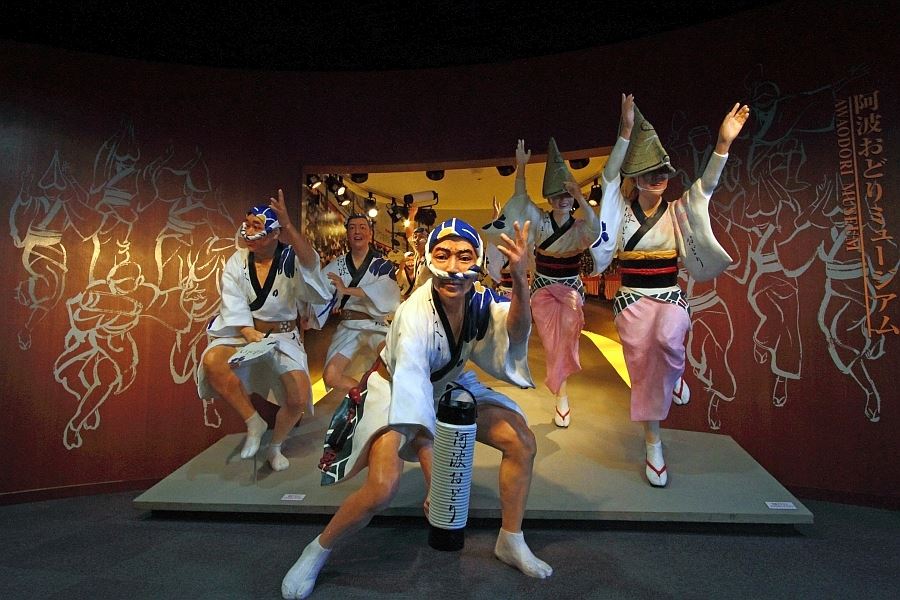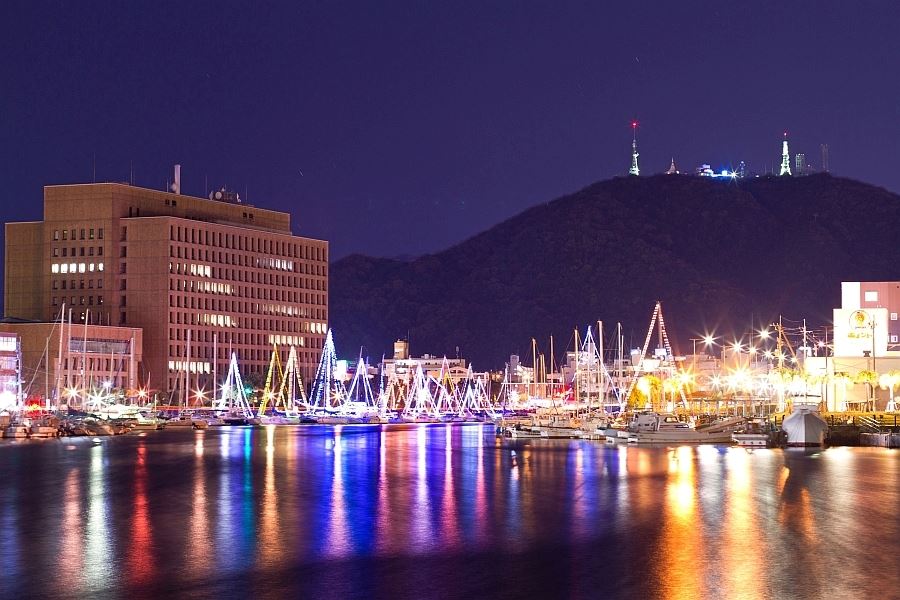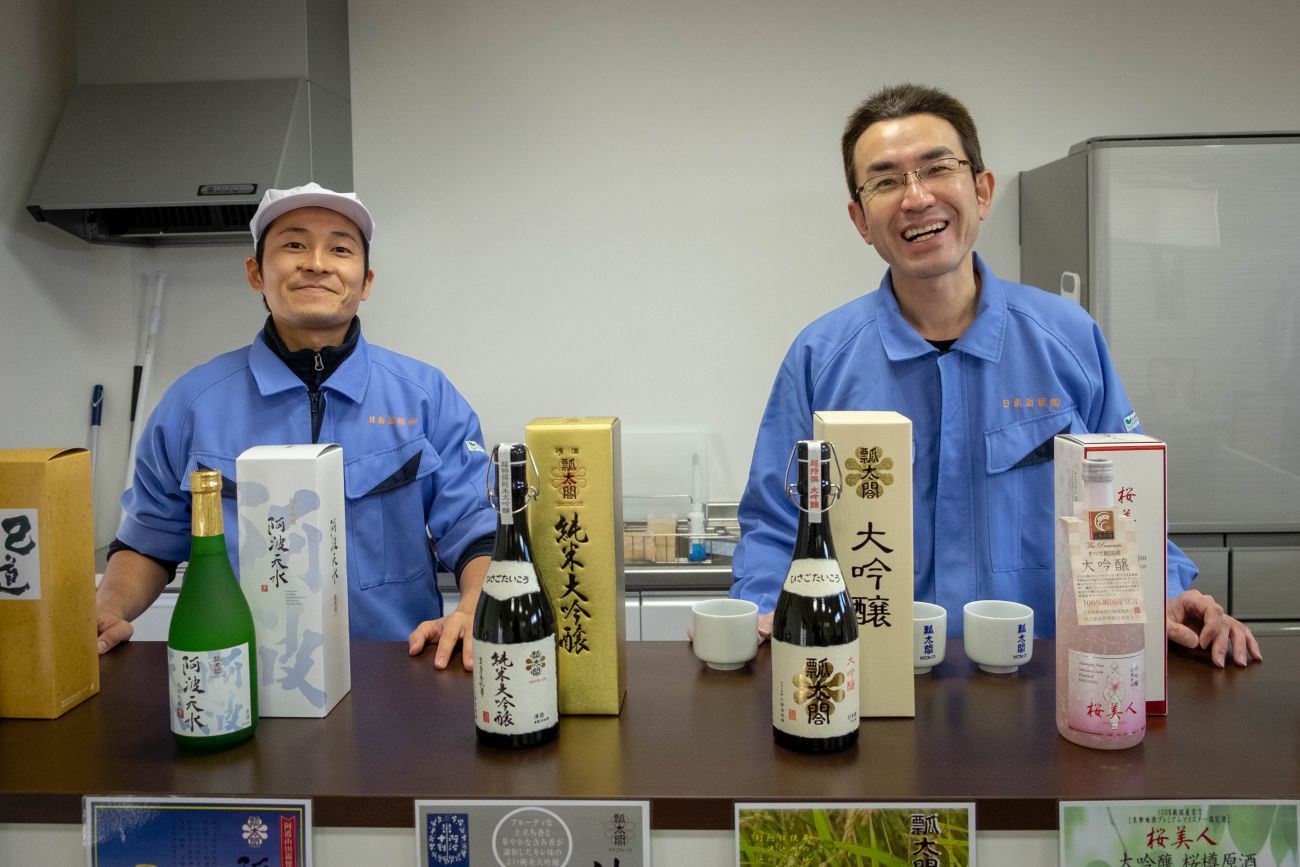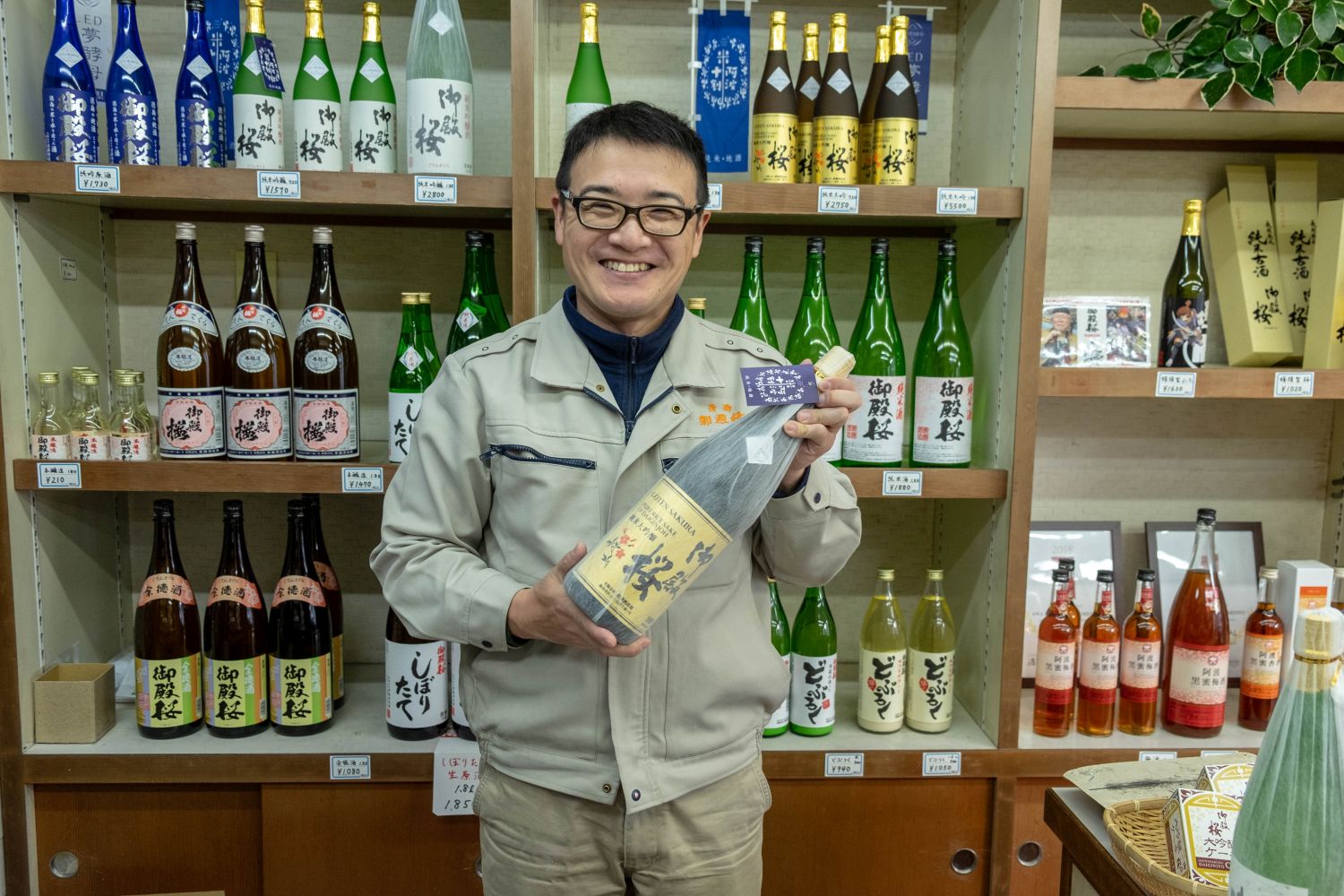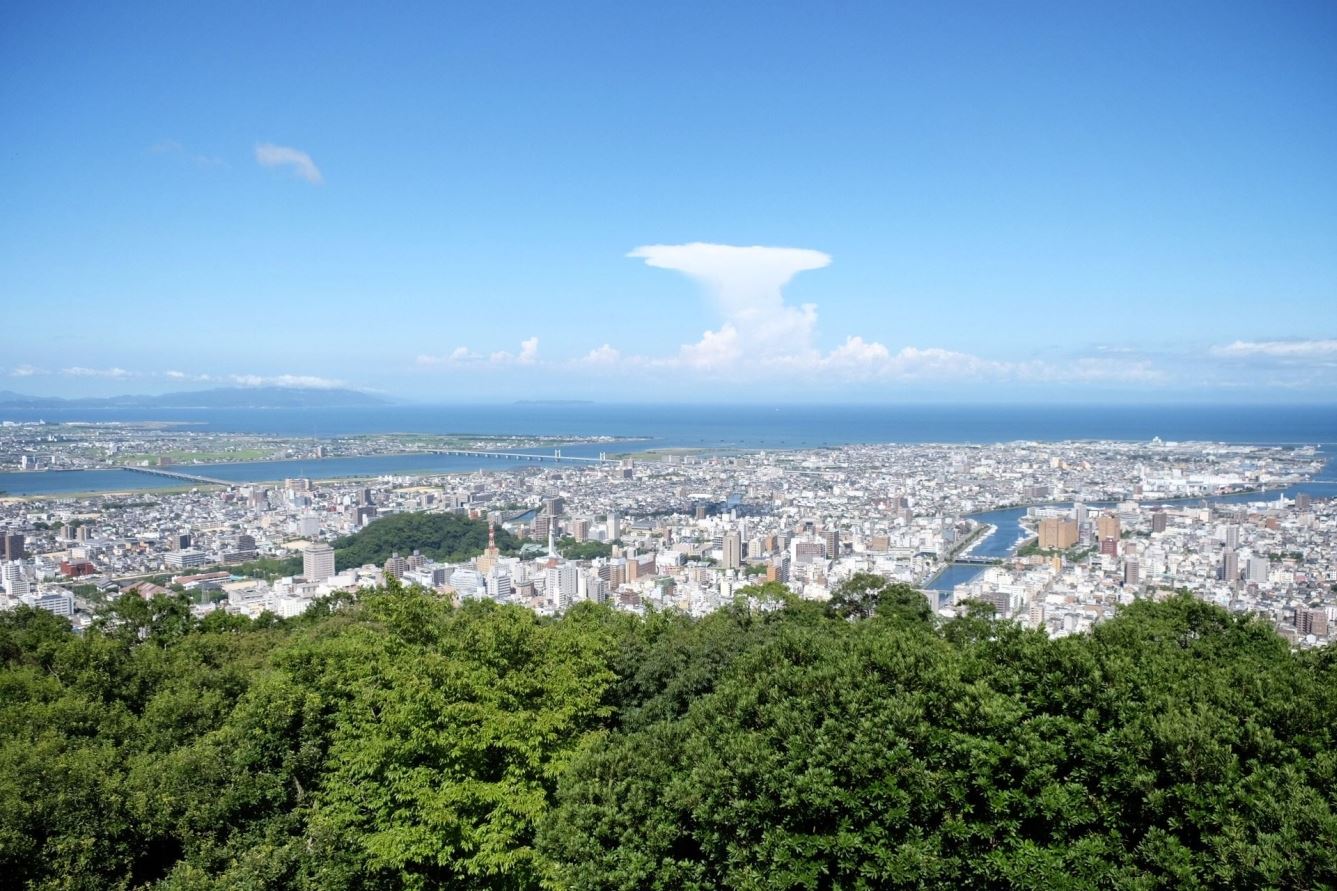Matsuura Honke Brewery
Home » Matsuura Honke Brewery
Matsuura Honke Brewery
Matsuura Honke is a sake brewer in Naruto, not far from the famous whirlpool. Their trademark is the instantly recognisable red snapper fish leaping out of the roiled Naruto Strait.
The brewery has a modern brewing facility, as well as several beautiful traditional brewery buildings that are open to the public for visits and events. Matsuura Motoko, the tenth brewer of the Matsuura family, is keen to welcome visitors from all over the world and induct them into the world of local sake in Tokushima. She’s currently working to tidy up and open all of the old buildings, with their many fascinating antiques. We sensed that Narutotai aims to be more than a place that makes excellent sake.

Shikoku Sake visited the brewery in February when Shikoku is at its coldest. Matsuura-san answered our usual questions and was even persuaded to show us around the working part of the brewery, normally closed to visitors.
Interview
When was the brewery established?
“Matsuura Honke is the oldest surviving brewery in Tokushima Prefecture. It started business in 1804 in the latter part of the Edo period. Apparently, the Matsuura family were originally pirates from western Kyushu. They were called ‘Matsura’ in those days. A group of them split off and came to live in the Awa domain in the early Edo period where they worked as merchants. The second Matsuura Naozō-san started brewing sake.
I’d like to be able to talk about this more authoritatively, so I’m researching the background, but it’s hard to find the information. In the garden here, there’s a Christian stone lantern, but I haven’t been able to ascertain its historical basis. I’m working with a local university to research the facts, and it’s a two-year project. Besides the brewery, there are many important historical places in the vicinity.”
Here the conversation veered off into pirate territory. Shikoku Sake is based outside Matsuyama, and the maritime clans who lived there left many Christian images, suggesting that the so-called pirates were largely Christian.
How many people are on the brewing team?
“My younger brother is the tōji, and there are three brewery workers. They’re full-time employees. I also help in the brewery.”
What rice do you use?
“We use Tokushima-grown Yamadanishiki for our higher-priced sake, and Kinuhikari for our lower-priced sake such as our Mizu to Kome brand. We use Yamadanishiki for all of our kōji rice. Mizu to Kome represents very good value for money.”
What is your water source?
“We use underground water from the Sanuki Mountains. But unfortunately, the new expressway has adversely affected water quality, so we’re having to have water trucked in from other places at the moment.”
What yeast do you use?
“We use Tokushima LED Yume Kōbo and Kyōkai No. 7 which has a banana-like aroma.”
What is the defining character of your sake?
“First of all, our sake is approachable and easy to drink. And it retains the full richness of the rice. Above all, it has a clean taste that enhances the enjoyment of food.”
What is the defining character of Tokushima sake?
“Tokushima is a relatively warm place, so in the past making sake was difficult. But today we make our sake in a refrigerated building, so it’s easier to make the kind of sake we’re aiming for.”
From the point of view of sake nationwide, where is your sake positioned?
“Nationally speaking, I don’t think our sake is well-known at all. It’s quite well known in Tokushima. But many people don’t know that sake is produced in Tokushima. Thirty percent of our sake production is drunk in Tokushima, and we’re trying to increase this at the moment.
Americans who have visited the brewery tell me that Narutotai is widely drunk in the US. “Everybody in New York drinks it!” they said. It probably has to do with our namazake sold in an aluminium bottle. Unfortunately, that’s spawned an imitator according to one of my American informants.”
Which countries are you currently exporting your sake to?
“We export to 14 countries – Canada , America, Australia, China, Hong Kong, Taiwan, Singapore, Thailand, France, England, Spain, and Portugal. Apparently, the French like to drink Narutotai with French food, but mostly our sake is served in Japanese restaurants. When we first sold our sake in New York, it was served with French food. We export 17% of our sake.”
What are your thoughts about overseas drinkers of your sake?
“There are many interesting places around Naruto, and I’d like visitors to experience the good, old Japan that can be found here. Also, the food of Tokushima is delicious, so I want people to enjoy it with sake. So first of all, I’d like them to come here. People from overseas visit here at the rate of a couple of groups a week.
And I’d like more wine drinkers to try nihonshu – stop drinking wine all the time and drink some sake. Especially with sushi!”
Is there are particular product that you’d like overseas drinkers to try?
“We have some junmaishu that’s particularly good served warm. This year we won a gold award in a contest for warmed sake. We have an event on the third Saturday every month and in the winter, you can enjoy warmed sake with oden in our shop. In the summer we have bands and bon odori dancing.”
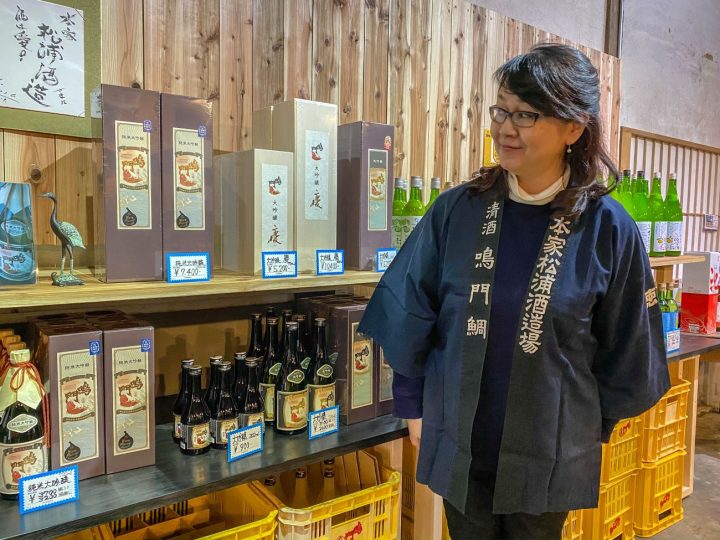
Is there a restaurant near here where people can drink your sake?
“There is! It’s called ‘Chotto Yotte Ii’. Their fish is really good. Also, we had a visitor from Italy who drank Narutotai the night before at a restaurant called ‘Arata’ near Tokushima Station and wanted to see where it’s made.”
Do any of your staff speak a foreign language?
“One of our staff speaks English. I’m thinking of buying a translation device for other languages.”
Brewery visit
Matsuura-san took us around some of the old brewery buildings. In the residential area, there are many items with a red snapper theme, in keeping with the brewery’s ‘tai’ brand. There’s a lump of wood that looks a bit like a fish, a chopping board used to prepare a snapper when the Emperor Taishō visited Naruto, and a beautifully carved wooden fish dish with a lid. The rooms are furnished and decorated with a wealth of elegant and valuable furniture and artworks.
In the old brewery itself, the tanks have been removed leaving a big empty space so that you can admire the old wooden beams and earthen walls. There’s a display of the Narutotai branded ceramic casks once used for delivering sake.
Matsuura-san sometimes shows visitors the new brewery if they apply in advance and haven’t eaten nattō, whose microorganisms have a deleterious affect on sake. We were fortunate to get a pass. The brewery is refrigerated, so sake can be made all year round, although the electricity bill is terrific. Some of the work has been automated – instead of mixing the mash daily by hand, there are rotating vanes in the bottom of the tanks, saving a lot of manual labour. Some tanks are refrigerated too, allowing for greater brewing flexibility. Matsuura-san shows us a rice washer that removes the bran dust more thoroughly. They bought it last year and she believes it results in a cleaner, more balanced flavour.
We finished with a tasting in the large, well-appointed and well-stocked shop. Besides sake, Matsuura Honke makes various fruits liqueurs, as well as ice cream containing sake lees. The all-Tokushima sake brought delighted grins all round. Says Matsuura-san, not without a certain pride, “You can really tell from the way a person smiles if they think a sake is delicious.”
Information
Name in Japanese: 松浦本家
Pronunciation: matsu-ura honke
Address: Yanaginomoto-19 Oasacho Ikenotani, Naruto, Tokushima 779-0303
Opening hours: 9:00-17:00
Website: http://narutotai.jp/
Related Tours

Experience the most beautiful and interesting temples of the Shikoku Pilgrimage in seven days.

A tour for families or friends, staying in the most characterful kominka and ryokan of Shikoku.

Visit the most beautiful and interesting temples of the Shikoku Pilgrimage and walk the toughest trails.

